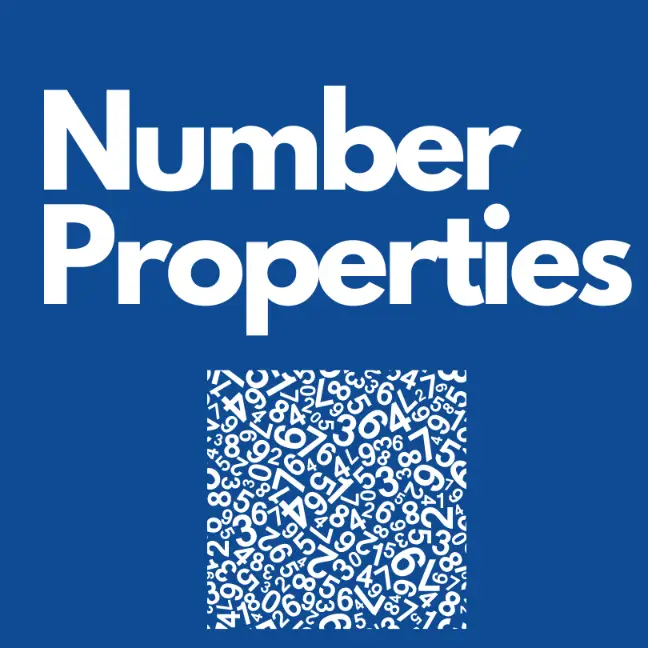Least Common Denominator Calculator
Enter fractions, integers, or mixed numbers separated by commas
Related Number Property Calculators
See all maths calculators
Least Common Denominator (LCD) Calculator Guide
The Least Common Denominator (LCD), also known as the Lowest Common Denominator, is a crucial concept in mathematics, particularly when working with fractions. This comprehensive guide will walk you through the process of finding the LCD, provide practical examples, and offer insights into its applications, common pitfalls, and real-world uses.
Understanding the Least Common Denominator
Before diving into calculation methods, it's essential to understand what the Least Common Denominator is:
Definition of LCD
The Least Common Denominator of two or more fractions is the smallest positive integer that is divisible by each of the denominators of the fractions.
For example, the LCD of 1/2 and 1/3 is 6, as it's the smallest number that is divisible by both 2 and 3.
Methods for Calculating the LCD
We'll explore two primary methods to calculate the LCD:
1. Least Common Multiple (LCM) Method
This method involves finding the LCM of the denominators.
Steps:
- Identify the denominators of the fractions.
- Calculate the LCM of these denominators.
Example: Find the LCD of 1/4 and 3/6
Denominators: 4 and 6
LCM of 4 and 6 is 12
Therefore, the LCD of 1/4 and 3/6 is 12.
2. Prime Factorization Method
This method involves breaking down the denominators into their prime factors.
Steps:
- Break down each denominator into its prime factors.
- Take each prime factor to the highest power in which it occurs in any of the denominators.
- Multiply these factors together.
Example: Find the LCD of 1/12 and 1/18
12 = 2^2 × 3
18 = 2 × 3^2
LCD = 2^2 × 3^2 = 36
Examples of LCD Calculations
To better understand the process, let's look at a table of LCD calculations:
| Fractions | LCM Method | Prime Factorization | LCD |
|---|---|---|---|
| 1/2 and 1/3 | LCM(2,3)=6 | 2 × 3 | 6 |
| 3/4 and 2/5 | LCM(4,5)=20 | 2^2 × 5 | 20 |
| 1/6, 1/8, 1/12 | LCM(6,8,12)=24 | 2^3 × 3 | 24 |
| 2/15 and 5/21 | LCM(15,21)=105 | 3 × 5 × 7 | 105 |
Visualizing Fractions and Their LCD Equivalents
Visualizing fractions and their LCD equivalents can be helpful for understanding the concept:
1/2 = 3/6
1/3 = 2/6
---
LCD: 6
In this visualization, we can see that when we convert 1/2 and 1/3 to equivalent fractions with the LCD (6), we get 3/6 and 2/6 respectively.
Working with Mixed Numbers and Integers
When finding the LCD of mixed numbers or integers:
- For mixed numbers, convert them to improper fractions first.
- For integers, treat them as fractions with a denominator of 1.
Example: Find the LCD of 2 1/4 and 3 1/3
Convert to improper fractions:
2 1/4 = 9/4
3 1/3 = 10/3
Now find the LCD of 9/4 and 10/3:
LCD = LCM(4,3) = 12
Common Mistakes to Avoid
When calculating the LCD, there are several common mistakes to be aware of:
-
Confusing LCD with GCD: The Least Common Denominator is related to the Least Common Multiple, not the Greatest Common Divisor.
-
Forgetting to convert mixed numbers: Always convert mixed numbers to improper fractions before finding the LCD.
-
Assuming the product is always the LCD: While the LCD is always a multiple of all denominators, it's not always their product.
-
Miscalculating prime factorizations: Errors in prime factorization can lead to incorrect LCD calculations.
-
Not simplifying the result: After finding the LCD, make sure to simplify if possible.
Practical Applications
Understanding how to calculate the LCD has numerous real-world applications:
Mathematics and Problem Solving
The LCD is crucial in adding and subtracting fractions, solving equations involving fractions, and comparing fractions.
Finance
In financial calculations, the LCD can be useful when dealing with different fractional monetary units or when comparing rates expressed as fractions.
Construction and Engineering
The LCD is often used in measurements and calculations involving fractions of inches or other units.
Cooking and Baking
When scaling recipes or combining ingredients measured in fractions, understanding the LCD can be very helpful.
Using Technology: LCD Calculators
While it's important to understand the manual process, there are many online tools and calculators available that can quickly calculate the LCD of multiple fractions. These tools can be particularly useful for complex calculations or when dealing with large numbers.
When using such calculators, it's important to:
- Verify the input format required by the calculator.
- Double-check your entries for accuracy.
- Understand the output format provided by the calculator.
- Use the results judiciously, especially in professional or academic contexts where showing your work may be required.
The Importance of Understanding LCD
The Least Common Denominator is a fundamental concept in mathematics that extends beyond simple fraction arithmetic. It provides insights into the relationships between fractions and is a building block for more advanced mathematical concepts. By mastering LCD calculation, you enhance your numerical literacy and problem-solving skills.
LCD and Fraction Addition/Subtraction
One of the most common applications of LCD is in adding or subtracting fractions. When fractions have different denominators, we need to find a common denominator (usually the LCD) before we can perform the operation.
Example: Add 1/3 and 1/4
- Find the LCD: LCM(3,4) = 12
- Convert each fraction to an equivalent fraction with the LCD:
1/3 = 4/12
1/4 = 3/12 - Add the numerators:
4/12 + 3/12 = 7/12
Therefore, 1/3 + 1/4 = 7/12
Conclusion
Calculating the Least Common Denominator is a valuable skill that enhances your ability to work with fractions and solve mathematical problems. Whether you're a student, a professional, or simply someone who enjoys working with numbers, understanding the process of finding the LCD can improve your mathematical capabilities and practical problem-solving skills.
Remember, practice is key to mastering these skills. Start with simple fractions and gradually work your way up to more complex ones. With time and practice, you'll find that calculating the LCD becomes second nature.
Key Takeaways
- The Least Common Denominator (LCD) is the smallest positive integer that is divisible by each of the denominators of the given fractions.
- Common methods for calculating LCD include the LCM method and the Prime Factorization method.
- When working with mixed numbers, convert them to improper fractions first.
- Integers can be treated as fractions with a denominator of 1.
- LCD has practical applications in mathematics, finance, construction, and cooking.
- While calculators are available, understanding the manual process is crucial for developing mathematical intuition.
- The LCD is essential for adding and subtracting fractions with different denominators.
- Visualizing fractions can help in understanding the concept of LCD.
By mastering LCD calculation, you'll have a powerful tool at your disposal for various mathematical operations, especially when working with fractions in real-world problem-solving scenarios.

